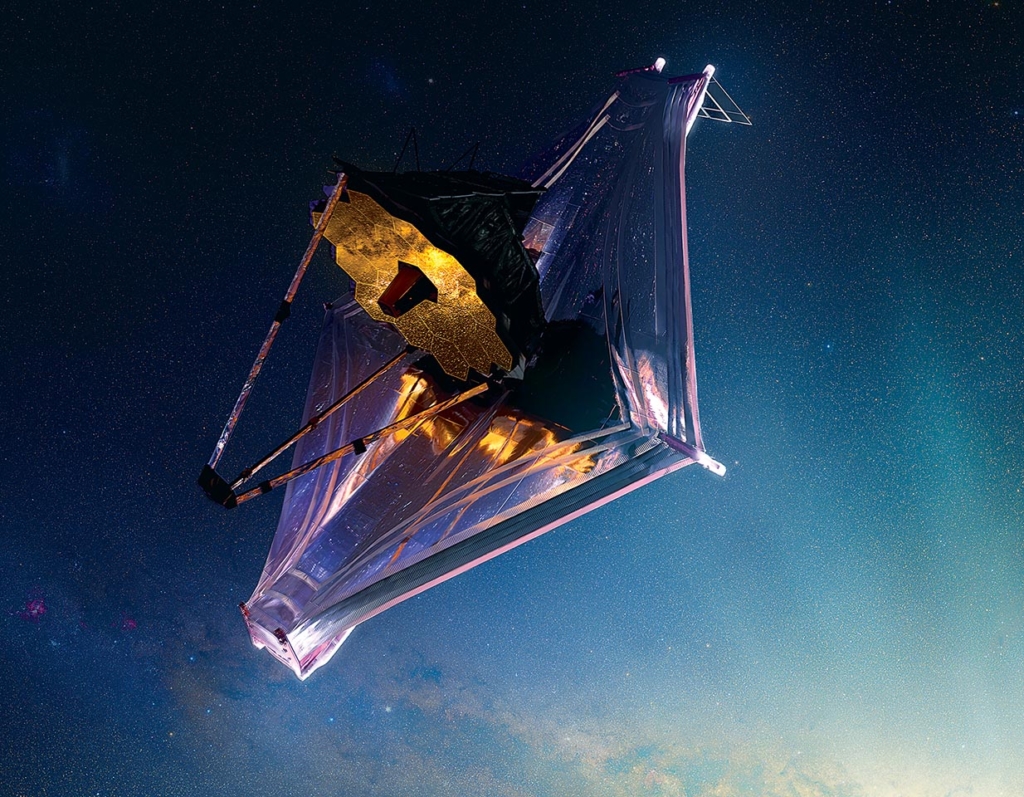
At this point, you may be wondering, “What’s the big deal with this James Webb Space Telescope?” It’s not often that astronomers dominate headlines across the world. However, it’s not every day that humanity successfully launches a space telescope as large or technologically advanced as the James Webb Space Telescope (JWST).
Astronomers have been looking forward to this moment for decades, with many of them having contributed large portions, if not the entirety, of their careers to this mission, so it is a momentous, once-in-a-lifetime achievement worthy of being celebrated worldwide. I know many astronomers around the planet were sitting in front of their computers, streaming the unveiling of the first JWST images with tears welling up in their eyes. I was certainly one of them.
For the general viewer, you might be wondering “Why is the telescope so special? Is it really all that different from the iconic Hubble Space Telescope?” Without going into details about the work involved in assembling the telescope and its instruments, let’s chat about at least one major scientific question the JWST can address and what makes it uniquely equipped to do so.
The telescope’s primary mirror is made of 18 hexagonal-shaped segments and has an effective diameter (it’s not exactly round) of 6.5 meters. Compare that to the 2.4-meter mirror of the Hubble Space Telescope. For those who haven’t taken Introduction to Astronomy, the difference means that the JWST captures 7.3 times more light than the Hubble. More light collected means you can see fainter objects. The ability to see fainter objects translates to seeing more distant objects. Seeing more distant objects allows astronomers to peer farther back into the history of the universe.
In addition to being bigger, the JWST’s mirrors are made of beryllium and coated with a thin layer of gold. The beryllium provides a lightweight, yet strong structure with properties suitable to the low and shifting temperatures the telescope will encounter in space. The shiny gold coating makes the mirrors excellent at reflecting infrared light. That’s really important to understanding why the JWST is going to peer back in time to the formation of the very first stars and galaxies.
Due to the cosmic expansion of the universe set into motion by the Big Bang some 13.8 billion years ago, the wavelengths of light emitted from galaxies that are receding from us are “stretched.” The amount of stretching, or what is typically referred to as a redshift, increases with the distance to the object due to the very nature of the cosmic expansion. Most of us have experienced a similar phenomenon while parked at a railroad crossing as an oncoming train blows its horn. While the train might be getting louder as it approaches, we hear a higher pitch of the horn than if the train were parked on the track. As the train passes, we hear the opposite effect and the pitch gets lower. Sound is a wave, the wavelengths of which determine the pitch we hear. The motion of the train toward or away from us alters the wavelength of the sound, which translates directly to the shift in pitch we perceive with our ears. Shorter wavelengths (train approaching) lead to a higher pitch. Longer wavelengths (train receding) lead to a lower pitch. Light, also a wave, experiences this same phenomenon known as the Doppler Effect. If we replace our train in the example above with distant galaxies that all happen to be moving away from us as the universe expands, we can expect the wavelengths of the light emitted by these galaxies to be longer than if they were sitting still. Red light, having the longest wavelengths of light perceived by the human eye, lends its name to the increase in wavelength.
How much longer are the wavelengths of light coming from these first stars and galaxies? Imagine that the receding train is moving so fast that the pitch is shifted beyond our ear’s ability to perceive the sound. In a similar fashion, cosmic expansion redshifts the light from these galaxies to wavelengths that are beyond our eye’s ability to detect them. The effect of 13+ billion years of cosmic expansion is so dramatic that ultraviolet and visible light emitted by these first objects will be shifted into the infrared region of the spectrum and beyond the colors we perceive with our eyes.
The JWST, with its gold-coated mirror and suite of infrared sensitive instruments, is built to detect and decode the infrared light that has traveled to us from across much of the visible universe. The first images released were snapshots or a glancing view into space. They revealed that, once the JWST has more time to turn those glances into stares, it is going to provide a most excellent window to a time in the early universe that has previously been inaccessible to the world’s astronomers. When we peer through that window, we expect to find answers to questions related to the origins of elements and cosmic structures that determined the nature of the present-day universe. I feel like it is always a great time to be an astronomer, but the next few years are going to be special as the JWST challenges and expands our understanding of the universe on a regular basis.
Jeff Bary is the Sweet Family Chair and an associate professor of physics and astronomy.
